Sierra Rios is a nonprofit river conservation organization founded by Rocky Contos, a paddler who made the first descent down 104 of Latin America’s rivers. Realizing that many of Mexico’s rivers may soon be “chopped up” by dams, Contos decided to call attention to the beauty of this country’s rivers by organizing rafting trips for both experienced paddlers and the general public.
Canadian Chris Lloyd recently returned from a 12-day Sierra Rios trip down the Tutuaca-Aros-Yaqui River, located in Chihuahua, a river that runs through what he describes as “Mexico’s answer to the Grand Canyon.”
“First, let me explain the strange name of this big, beautiful river,” said Lloyd. “Mexicans seem to name their rivers the same way they name their streets. A street goes for five blocks, and it’s called Juárez, and the next five blocks it’s Hidalgo and after that, it’s something else. In many parts of Mexico, the rivers get the same treatment. So we started out on the Tutuaca. Eventually, it became the Aros. And 280 kilometers downstream, at the end of our trip, the same river is known as the Yaqui.”
Participants in this river adventure included Lloyd and four friends, all experienced whitewater kayakers, plus two guides and three guide helpers. They had three large rafts as well as numerous kayaks.
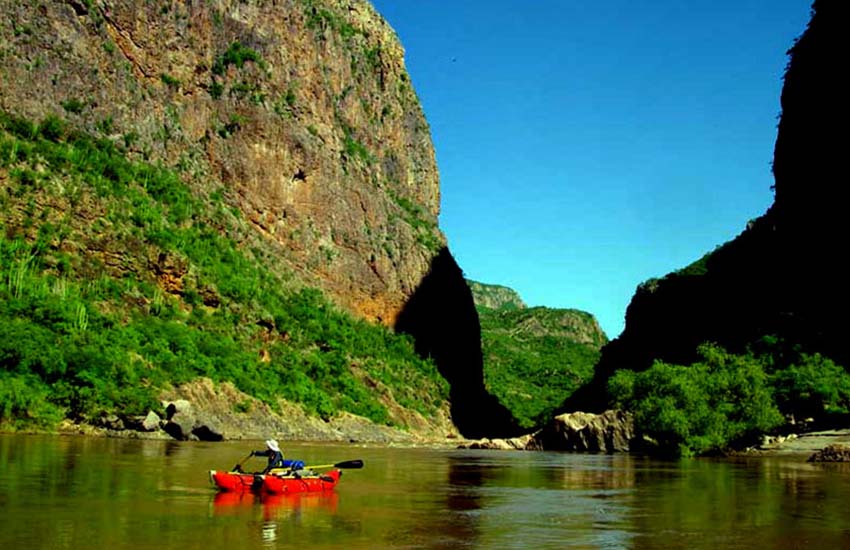
“We put in [our watercraft] right below the Dolores Mine in Chihuahua,” Lloyd told me. “It’s a big gold and silver mine just east of the Sierra Madre Occidental that has been operating for 10 years.
“The area we went through — which cuts across the entire Sierra Madre Occidental [mountain range] — is considered the Grand Canyon of Mexico. Yes, the Barranca de Cobre [Copper Canyon] is deeper, but it doesn’t have a navigable river at the bottom of it,” he said.
“This canyon is paddle-able and, if you catch it in major flood stage, as we did, it actually has the same volume of water as the Grand Canyon,” he said.
Lloyd went down the Tutuaca in August and saw rain every day and every night, which meant that the river was continuously rising. “Every day,” he said, “the challenge was to make camp before the skies opened up.”
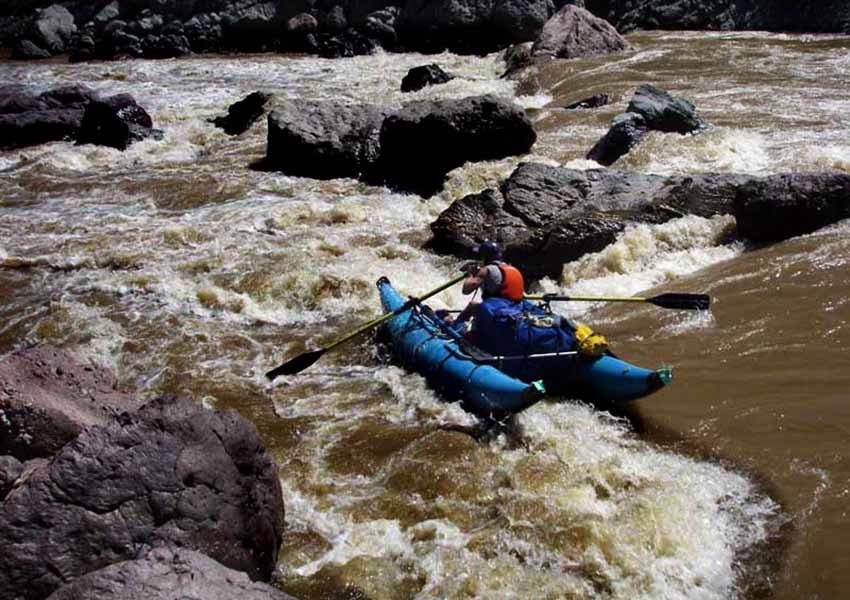
On this trip, the kayaks of the three guide helpers functioned as safety boats.
“If anything were to happen to any of us in our boats,” said Lloyd, “the helpers’ job was to come pull us out — which they had to do more than once.”
On the first day, things went smoothly because the water was a meter higher than normal, meaning that many of the rocks which cause rapids were a meter underwater. On the other hand, Lloyd explained to me, the eddy lines on the river’s two sides were getting bigger.
The eddies are created by irregularities on the shorelines which cause the water to recirculate back upstream.
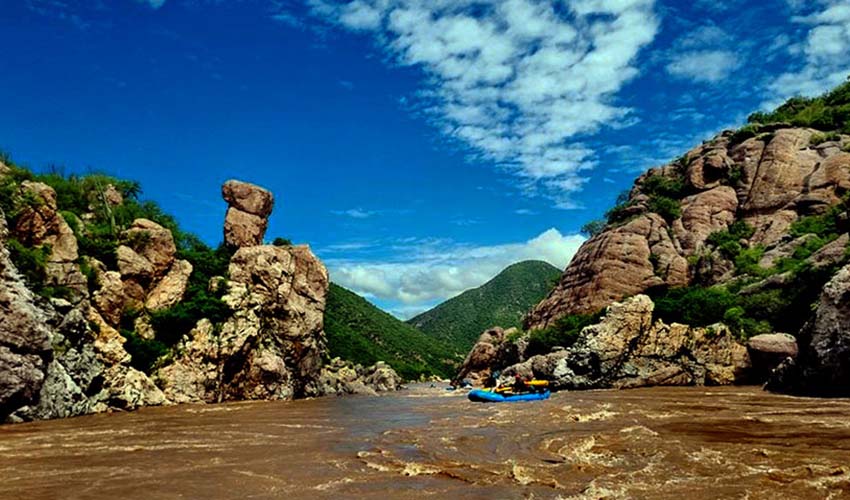
“There is a sort of line on each side of the river where the water is going downhill on one side and on the other side it’s coming uphill,” he explained. “So you have to be on your game to cross over these eddy lines and not tip over. When the water level is higher, those get stronger in both directions. So on one curve, over I went.”
In his younger days, Lloyd said he could flip his kayak back upright and jump back into it while still bouncing down the river.
“But I seem to have lost that capability, so I needed the young helpers to come and grab hold of the kayak on the other side so I could pile back in.”
At the end of the day, the rafts were beached and the crew made camp. Because this was a catered trip, a deluxe event compared to the guests’ previous whitewater experiences, they relaxed while guide Germán Arroyo prepared them dinner.
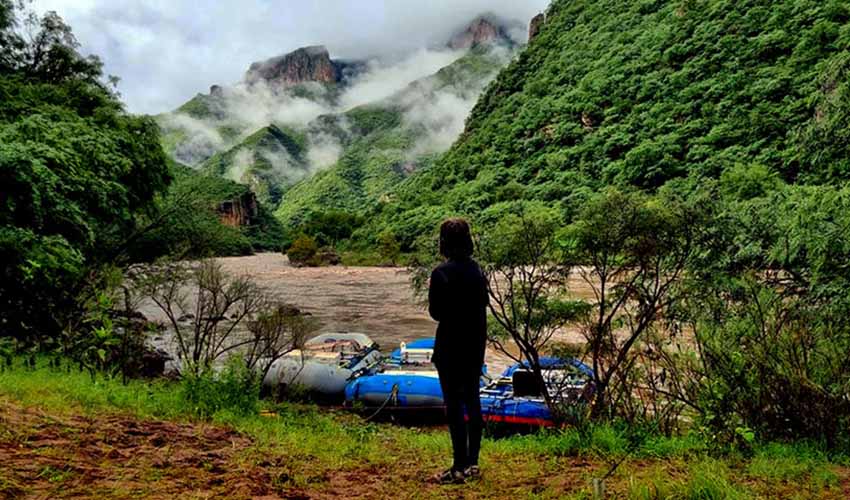
“Germán is a great cook,” commented Lloyd, “so we never went hungry. A typical meal was salmon and rice and vegetables. Because he brought along not one but two Dutch ovens, we enjoyed dishes like baked lasagna and pizza, and we had fresh brownies for dessert two or three nights.”
On the second day of their voyage, the crew came to an intense and powerful class IV rapid, for advanced kayakers only. Lloyd had planned to portage around it (carry the kayak by land) but suddenly he found himself in the middle of it.
“I was going through waves that are as high as my kayak is long, and down I went and then up again and on the other side of this giant wave I found, what is known in whitewater parlance as a hole,” he said. “There’s no water there and you have to decide: ‘Am I going left, right or am I going down into the hole?’
He described going into a hole as “like going into a washing machine.”
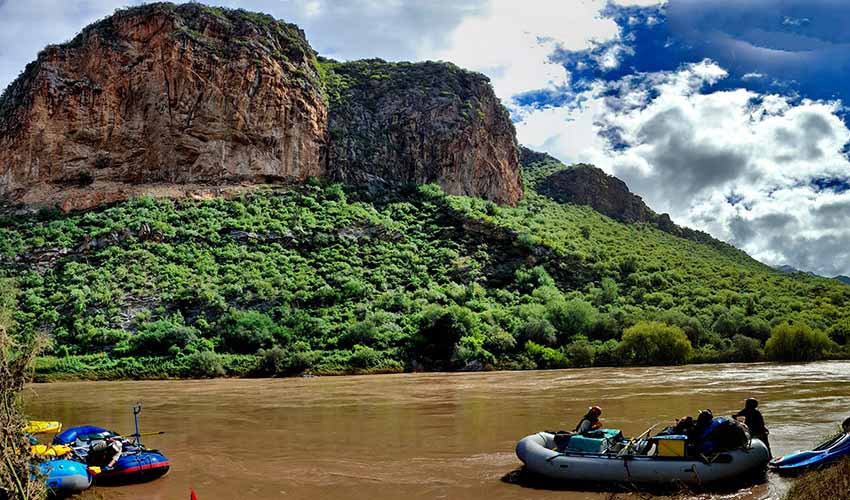
“You go around and around and around. Fortunately, I had my navigator in front of me, and he would either show me the best way to avoid the hole, or he would go down into the damn thing and I would say, ‘Okay, I’m going around that one.’”
After surviving the class IV and the biggest waves he had ever seen, Lloyd could at last see all his companions off in the distance, safely out of the water.
“But there was a house-size boulder between me and them, and they were all frantically waving at me to go left. But left of the huge rock, there was a little chute, and water was pouring into it from three different directions.
“I was looking at this scene and thinking, ‘What? I don’t want to go through there!’ I looked up, and they were all [still] pointing left. So I said, ‘Okay, okay, I’m going left,’ and I barreled straight into the jaws of the beast.
![]()
Walls of water towered above him. “I said, ‘Okay, you’ve got to aim for the center, buddy!’ And I went right through it and popped out the other side, just perfect.”
On the fourth day, the river rose considerably. By the sixth, it was in peak flood stage, almost five meters above its normal flow levels.
“The guides had never seen anything like this,” said Lloyd. “It was certainly the highest it’s ever been in the last 15 years, so when we reached a town called Natora — our one and only possibility of escape — our guides asked the people [there], ‘Can we exit the river here? Can you find transportation to get us out of here?’
“And they said, ‘No, the road’s washed out.’”
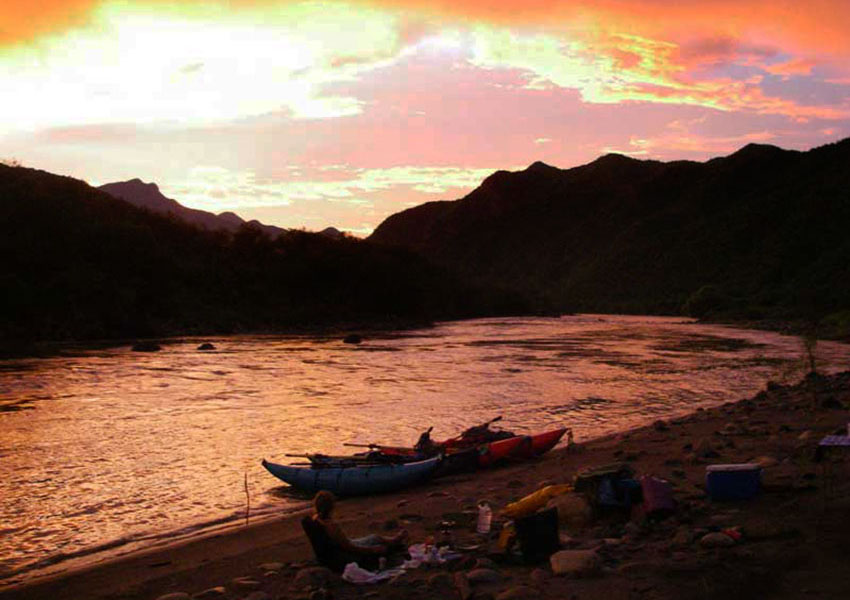
Back in the crew went. What awaited them downriver were narrow canyons 50 meters high, where the water was moving faster than ever, creating literally a string of whirlpools, one after the other.
“You will all have to ride on the big raft,” announced Germán. And off they went to run the maelstrom gauntlet.
“We were on a raft that measures 5 meters by 2.2 meters,” said Lloyd. “It was big, but it would get thrown this way and then that way, and then it would spin around. The small boats, because they’re so light, would easily ride over the whirlpools.”
“In one case, however, I saw a whirlpool open up right underneath one of the kayakers, and I couldn’t believe my eyes; he looked absolutely delighted and was having the time of his life, paddling around in a circle like Jack Sparrow in Pirates of the Caribbean. And then the whirlpool closed up again… and off he went.”
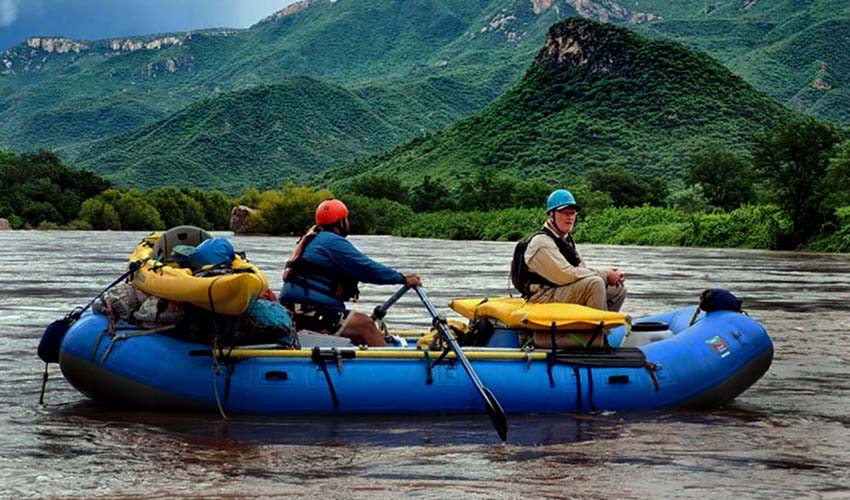
Exhausted but at the same time exhilarated by their experience, the members of the excursion arrived safe and sound at their take-out point near Saruaripa, Sonora, on August 25.
Sierra Rios offers river trips on three continents, always in an effort to raise awareness about beautiful watersheds threatened by dam development. These are all gorgeous, impressive rivers, such as the Zambezi in Africa, the Amazon in the Andes and the Río Usumacinta, which marks the border between Mexico and Guatemala.
You don’t have to be a top athlete to enjoy most of them. Most excursions are family-friendly and require no previous rafting experience.
- For more information go to their website at www.sierrarios.org.
The writer has lived near Guadalajara, Jalisco, since 1985. His most recent book is Outdoors in Western Mexico, Volume Three. More of his writing can be found on his blog.
